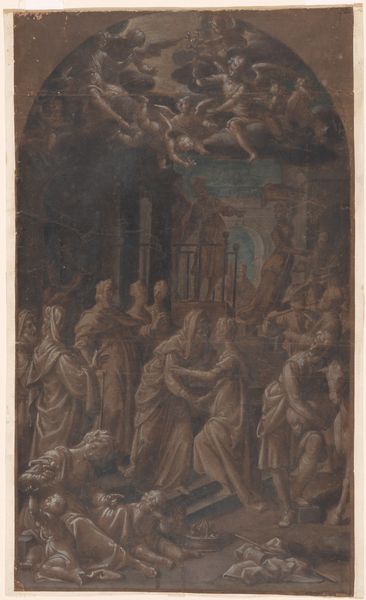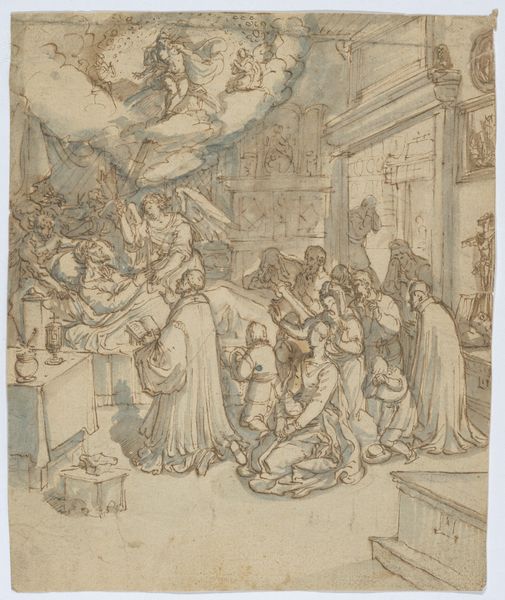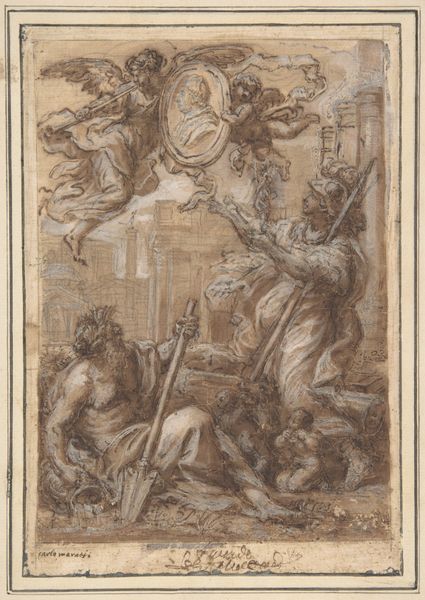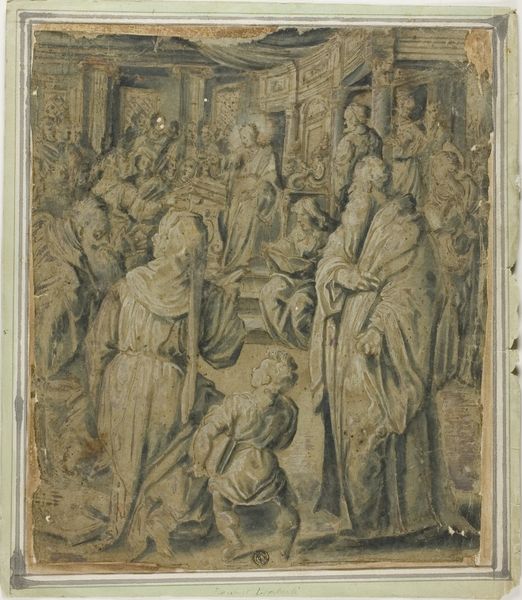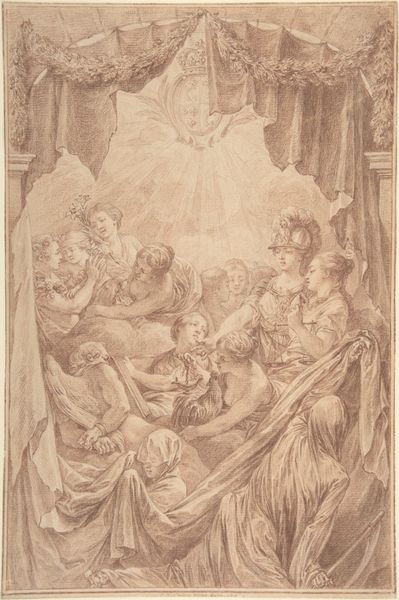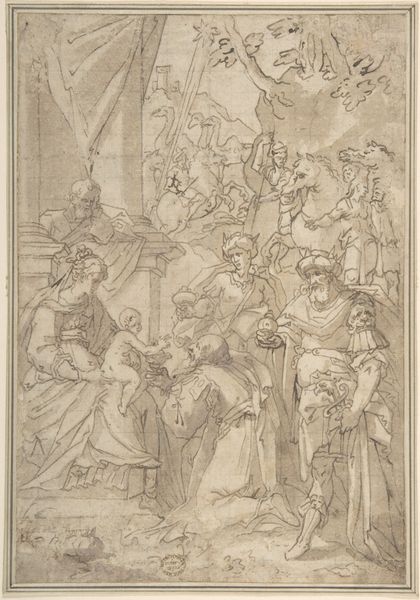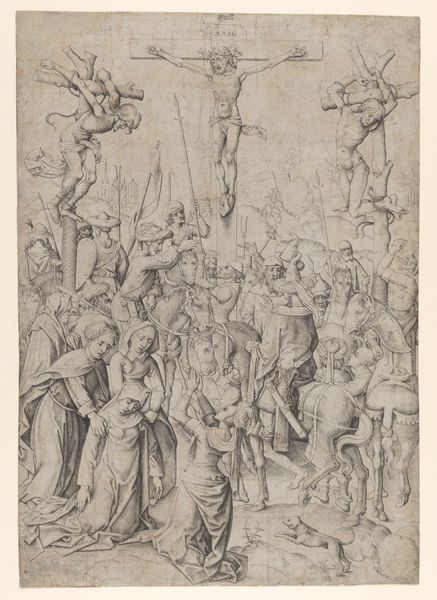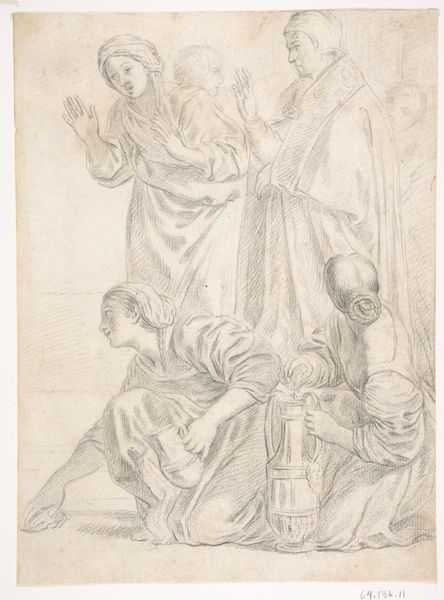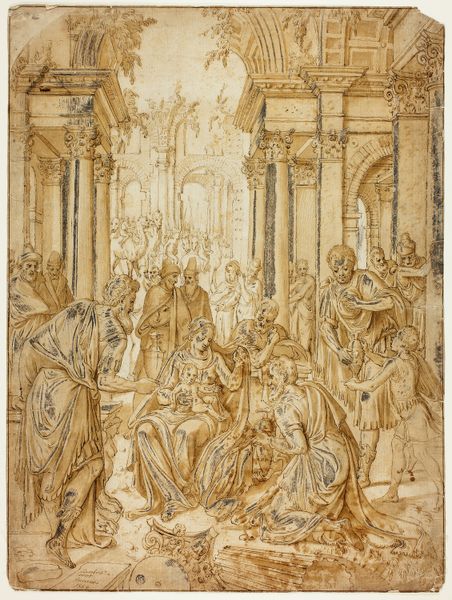
drawing, print, paper, pencil, chalk
#
drawing
#
venetian-painting
# print
#
etching
#
figuration
#
paper
#
11_renaissance
#
pencil
#
chalk
#
history-painting
Dimensions: 287 × 199 mm
Copyright: Public Domain
Curator: Here we have Paolo Veronese’s "Mystic Marriage of St. Catherine," a work created in pencil, chalk, pen and brown ink, with brown wash over graphite on paper. Editor: My first impression is one of softness. Even though it's a drawing, there's a real sense of movement, an ethereal quality enhanced by the lightness of the media. It feels reverent, doesn't it? Curator: Absolutely. To understand it fully, consider Veronese's historical context. He flourished in 16th-century Venice, a city known for its opulent displays of wealth and power. His paintings, particularly his large-scale narrative works, often served as visual testaments to Venetian prestige, but were they more? In this instance it seems he may have been doing this for his own introspection, perhaps even experimenting. Editor: I think I see the influence, considering the ways Venice positioned itself as a kind of ‘New Jerusalem.’ Do you believe this work’s delicate aesthetic reflects prevailing religious sensibilities, or perhaps Veronese’s subtle negotiation of power dynamics between the earthly and the divine? The drawing captures St. Catherine kneeling before the Virgin Mary and Christ Child, receiving a ring. It symbolizes her mystical marriage to Christ. Curator: Exactly! And it’s within those social structures, with their deeply ingrained class and gender expectations, that we start to truly appreciate how profoundly radical these scenes were. These were meant to suggest what was being aimed at, especially in that time of so-called "Great Discovery." To view the idea that one has an intercession to God and be granted such things; how might a young person think today? Editor: A radical intimacy, a breaking of hierarchy. It really is fascinating how Veronese imbued religious subjects with such earthly sensuality. This piece, rendered so delicately, becomes a compelling narrative about the interplay of spiritual devotion and human connection. What truly interests me, however, is this focus on what he must have sought to have given in order to show what this act could portray in oneself. Curator: Considering our present era, steeped in its own forms of political and social unease, this Renaissance piece calls for continued dialogue. The drawing reminds us of the powerful impact of questioning ingrained power systems and reimagining relationships that define identity and status. Editor: It invites us, regardless of belief, to consider where, even now, marriages are political acts, statements of faith or alliance – and how we depict them speaks volumes about our own evolving values.
Comments
No comments
Be the first to comment and join the conversation on the ultimate creative platform.
